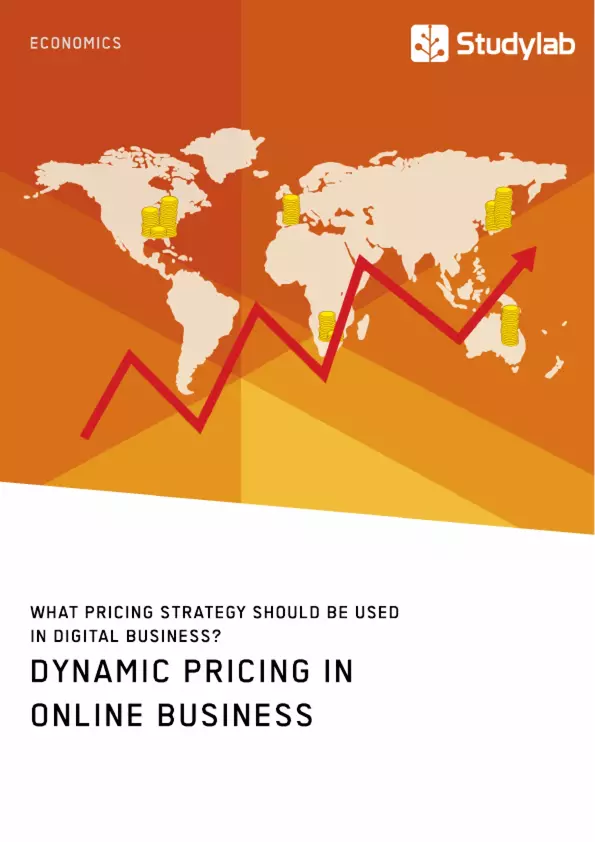40% of German companies vary their prices dynamically on the internet. This strategic tool helps them to exploit the consumer's maximum willingness to pay. Studies confirm that these companies are able to reach higher profits through dynamic pricing. But the federal ministry of consumer protection sees the price transparency for consumers at risk.
This publication shows how new and existing customers react to dynamic pricing techniques. It examines if regular customers have a different price fairness perception than new customers.
Customers often react with dissatisfaction and complaining when they notice a disadvantage due to dynamic pricing. Their dissatisfaction can have a long-term impact on the buyer-seller relationship as well as the company's reputation and profits. Therefore, price fairness perception is crucial for dynamic pricing strategies.
Keywords:
- Dynamic Pricing;
- Status-based Dynamic Pricing;
- Consumer Dissatisfaction;
- Price Transparency;
- New Customers;
- Regular Customers
Inhaltsverzeichnis (Table of Contents)
- Abstract
- List of Abbreviations
- List of Figures
- List of Tables
- 1 Introduction
- 2 Theoretical Foundation and Literature Review
- 2.1 Definition and Classification of Dynamic Pricing
- 2.2 Literature Review
- 2.3 Identified Research Gap
- 3 Derivation of Hypotheses and Conceptual Model
- 3.1 Consumer Reactions on Dynamic Pricing
- 3.2 Status-based Dynamic Pricing
- 3.3 Influence Factors on Price Fairness Perception
- 3.4 Consumer Reactions on Price Fairness Perception
- 3.5 Control Variable
- 3.6 Conceptual Model
- 4 Design of Empirical Study
- 4.1 Survey Method
- 4.2 Survey Scenarios
- 4.3 Survey Items
- 5 Data Analysis and Results
- 5.1 Survey Sample
- 5.2 Measurement Reliability
- 5.3 Hypotheses Testing
- 5.4 Further Analyses
- 6 Concluding Discussion
- 6.1 Discussion of Results
- 6.2 Managerial Implications
- 6.3 Limitations and Further Research
- References
Zielsetzung und Themenschwerpunkte (Objectives and Key Themes)
This master thesis aims to investigate consumer reactions to dynamic pricing in e-commerce, specifically focusing on status-based dynamic pricing and its impact on both new and existing customers' price fairness perception and repurchase intention.
- Examining consumer reactions to dynamic pricing, particularly status-based dynamic pricing.
- Investigating the relationship between dynamic pricing and price fairness perception.
- Analyzing the moderating effects of individual consumer characteristics, relationship quality, and prior experience on the relationship between dynamic pricing and price fairness perception.
- Exploring the mediating role of price fairness perception on the relationship between dynamic pricing and repurchase intention.
- Deriving managerial implications for e-commerce retailers to optimize their dynamic pricing strategies.
Zusammenfassung der Kapitel (Chapter Summaries)
The thesis begins with an introduction providing context and outlining the research question. Chapter 2 delves into the theoretical foundations of dynamic pricing and reviews relevant literature, identifying existing research gaps. Chapter 3 establishes a conceptual model, proposing hypotheses about the relationship between status-based dynamic pricing, price fairness perception, and repurchase intention. Chapter 4 outlines the methodology employed, including the survey method, scenarios, and survey items used for data collection. Chapter 5 presents the data analysis and results, examining the differences in price fairness perception between new and existing customers and testing the proposed hypotheses. Finally, Chapter 6 discusses the results, drawing managerial implications and highlighting limitations and avenues for future research.
Schlüsselwörter (Keywords)
Dynamic pricing, status-based pricing, price fairness perception, repurchase intention, e-commerce, consumer behavior, price sensitivity, relationship quality, prior trust, prior experience, moderation, mediation.
- Quote paper
- Anonym (Author), 2018, Dynamic Pricing in Online Business. What Pricing Strategy Should Be Used in Digital Business?, Munich, GRIN Verlag, https://www.grin.com/document/425082



